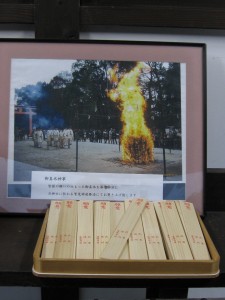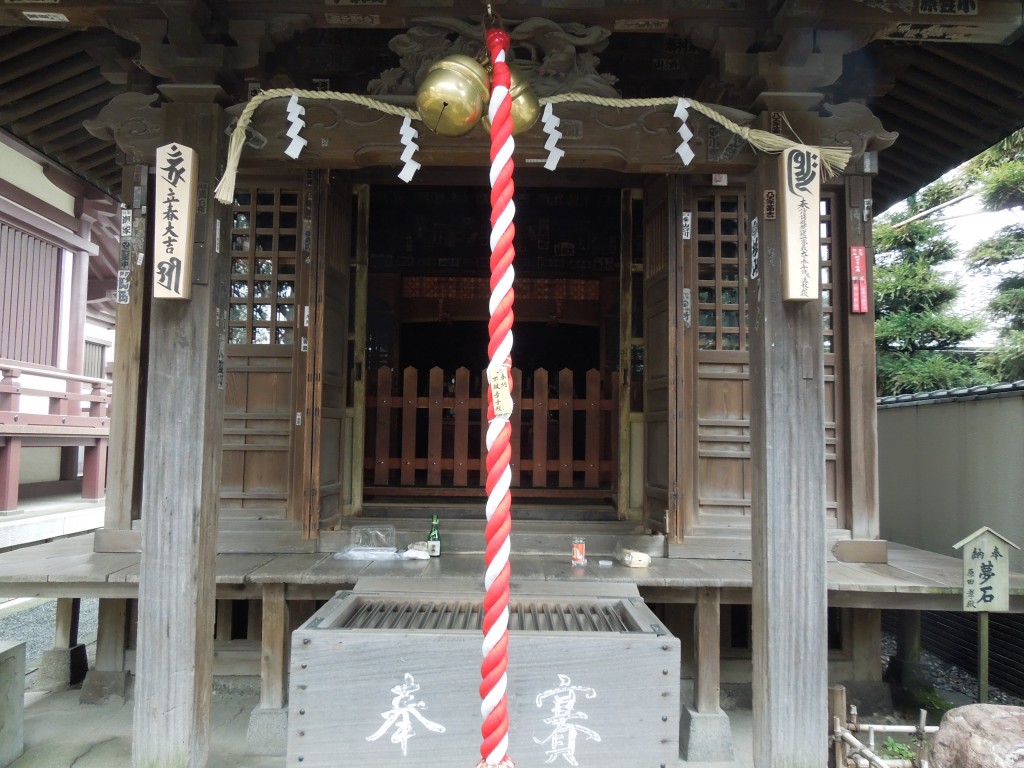Hinduism and Shinto seem to share a lot in common. They’re pre-Buddhist, animist and polytheist. The sun enjoys a special place in their pantheon. Their spirit-gods have animal familiars, and they need to be honoured and entertained. The religions are steeped in the mythological past, and worshippers practise ritual ablution and immersion in water.
As A.J. Dickinson has pointed out, there may well have been direct links between ancient India and Japan through the early trading routes, with holy men making their way up the Chinese coast. So why did Hindu gods end up in Japan mostly as Buddhist deities rather than kami?

The fire festival which originated in India has found a home both in Japanese Buddhism and Shinto
It’s a question that Green Shinto friend Anuradha put to Videshi Sutra, an expert on Hindu matters. “I’d say the reason the Devas and Kami never merged, is because Devas are embedded firmly in Buddhist cosmology,” he responded. It followed a lengthy article entitled ‘Hindu devas take a Silk Road trip to Japan‘.
The fact that Devas were adopted at all in Japan probably owes to their conceptual similarity to Kami. Buddhism in other places like Central Asia didn’t place nearly so much emphasis on the Devas. The other major factor is the presence of the esoteric Shingon sect of Buddhism, which placed a big emphasis on Devas. Esoteric sects typically brought a lot more from the Vedic tradition than more mainstream sects. Shingon also uses Sanskrit based Siddham script, and has a Goma (Homa) (Havan) fire ritual.
It’s in Shingon and early forms of Japanese Buddhism that one finds the closest links to Hindu deities in Japan. Mark Schumacher’s amazing onmark site has a list of over 80 such cases. Nearly every Buddhist deity has its Hindu counterpart, he writes, and there are an awful lot of Buddhist deities in Japan!
Nonetheless there are also some correspondences between Hindu deities and Japanese kami, the most notable being the Seven Lucky Gods where Benten, Bishamonten and Daikokuten can all trace their origins to India. In the posts that follow, we’ll explore some of these connections and the curious links between prehistoric India and modern-day Japan.

Back to the roots? A shrine with Sanskrit inscriptions in the top left and right

very cool, am excited for more!
Thank you, Heather. Anuradha has written in to say that “The Sanskrit on the columns seems to be written either in a modified/different script or in highly stylised calligraphy but I am almost certain that the top left symbol is AUM and bottom left is SHREE. The top right looks like a calligraphic Ganesha. But not sure. ( the original Sanskrit script is Devnagari which is the one I know). However AUM and Shree are symbols of Ganesha and top right looks like Ganesha. So is it a Ganesha shrine?”
I believe she may be on the right course. Ganesha is worshipped in Japan by the esoteric sects of Buddhism (Tendai and Shingon) in the form of a deity called Kankiten. The shrine in the picture is in fact in a small Tendai temple in Kyoto.
Further to the above, Gabi Greve’s informative site on Japanese deities has the following about Ganesh worship in Japan, written by Satish Purohit….
“Scholars commonly date the presence of Ganesha in Japan with the age of Kukai (774- 834), the founder of the Shingon sect of Japanese Buddhism. The centrality of the worship of Ganesha or Vinayaka or Kangiten, as he is popularly called in Japan, is a distinguishing feature of this cult. The doctrines, rituals and beliefs of the sect have a number of parallels with the cult of Ganpatyas, to which belonged saints like Gajanan Maharaj of Shegao, Maharashtra.
Ganesha’s most popular form in Japan is the dual-Vinayaka or the Embracing Kangi. Two tall figures, elephant headed but human bodied, male and female, stand in embrace. The female wears a jeweled crown, a patched monks robe and a red surplice.
He appears in the Ryoukai mandara 両界 曼荼羅 as an elephant-headed deity called Binayakaten 毘那夜迦天. In China and Japan he came to be revered under the the name of Kangiten. Although in texts, two, four and six-armed forms are mentioned, in Japan Kangiten is usually shown as a pair of two-armed, elephant-headed deities in embrace. Images of Kangiten are rare and many are kept as secret images in temples and shrines. Many are small, and made of metal because his ritual involves pouring oil over the images. The ritual associated with Kangiten was secret and was part of other ritual observances, such as the goshichinichi no mishuhou 後七日の御修法 . In popular worship he signifies conjugal harmony and long life.”